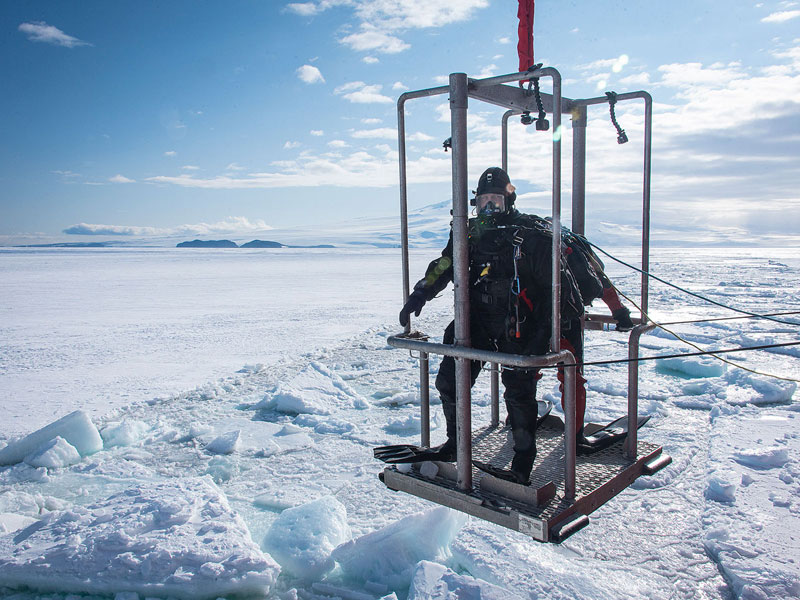Clearance diver’s unique, and cold, deployment
By Lookout on Mar 19, 2020 with Comments 0
Antarctica is the coldest of the Earth’s continents, which might explain the name of a recent US-led mission entitled Operation Deep Freeze.
From December to February, United States Coast Guard Cutter Polar Star, a heavy icebreaker, made its 23rd deployment on the annual joint U.S. military service mission to resupply the U.S. Antarctic stations in support of the National Science Foundation, the lead agency for the U.S. Antarctic Program.
Joining the United States Coast Guard dive team was LS Jeff Dubinsky, a Fleet Diving Unit (Pacific) clearance diver.
The 122 metre, 13,000-ton Polar Star produced a 37-kilometre channel through the one to four-metre-thick ice to McMurdo Station.
The three-week process to cut the ice enabled the offload of over 19.5 million pounds of dry cargo and 7.6 million gallons of fuel from three merchant vessels. All three ships combined offloaded enough supplies to ensure the research station has provisions until 2021.
Supplies are critical for the science station’s daily operations and are integral to the National Science Foundation’s massive overhaul of McMurdo Station. It is in the midst of a $355 million construction project to remove 104 buildings around the research station and create a central hub of six main structures. The structures will contain science labs, operations offices, and accommodations for the station. Construction is scheduled to finish in 2026.
As a member of the dive team, LS Dubinsky integrated with the United States Coast Guard and U.S. Army Dive teams in Honolulu, Hawaii, for a workup dive, ice dive theory training, and embarkation on Polar Star. The ship transit from Hawaii to Antarctica took a month with a port call in Hobart, Tasmania. Upon arrival on the continent, the ship was greeted by large ice flows, 24-hour sunlight, and pods of killer whales following the ship.
The dive team provided the icebreaker an emergency diving and underwater repair capability. During the 42 days at sea, between Hobart and the port visit to McMurdo Station, the dive team was needed to dive beneath the ice.
As the ship transited through the ice, Polar Star’s propellers crushed the remaining large chunks in its path. Underwater mechanical issues can arise from the rough vibrations passed through the ship’s propeller shafts.
The first dive required the dive team to inspect the ship’s propellers and rudder system for damage. Post inspection, the team continued their dive underneath the ice flow.
“The cool water temperature stops the growth of most algae and underwater contaminates, which creates extremely clear visibility,” said LS Dubinsky. “Four divers descended to the seabed floor and found an amazing cold water ecosystem filled with coral, starfish, leopard seals and krill.”
Diving under the ice presents dangers to both the divers and the team supporting the dive. The ice flow can close the access hole to divers while underwater, the below freezing temperatures of the environment can create equipment freeze ups, and personnel working to support the divers can be affected by the harsh weather outside the ship.
“Having the opportunity to deploy with the USCG to Antarctica, and dive in such a remote and extreme environment was an unbelievable experience,” said LS Dubinsky.
Filed Under: Top Stories
About the Author:






